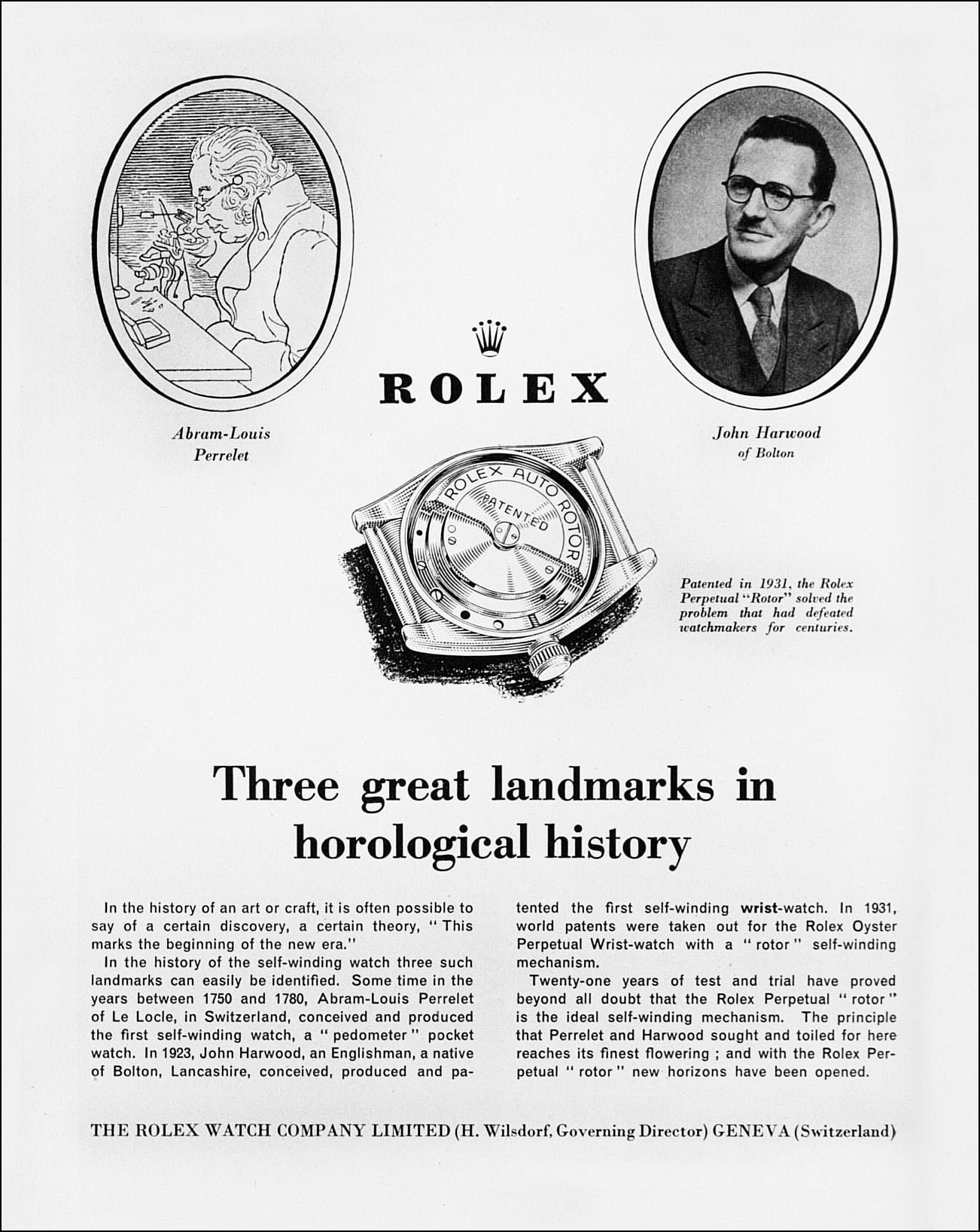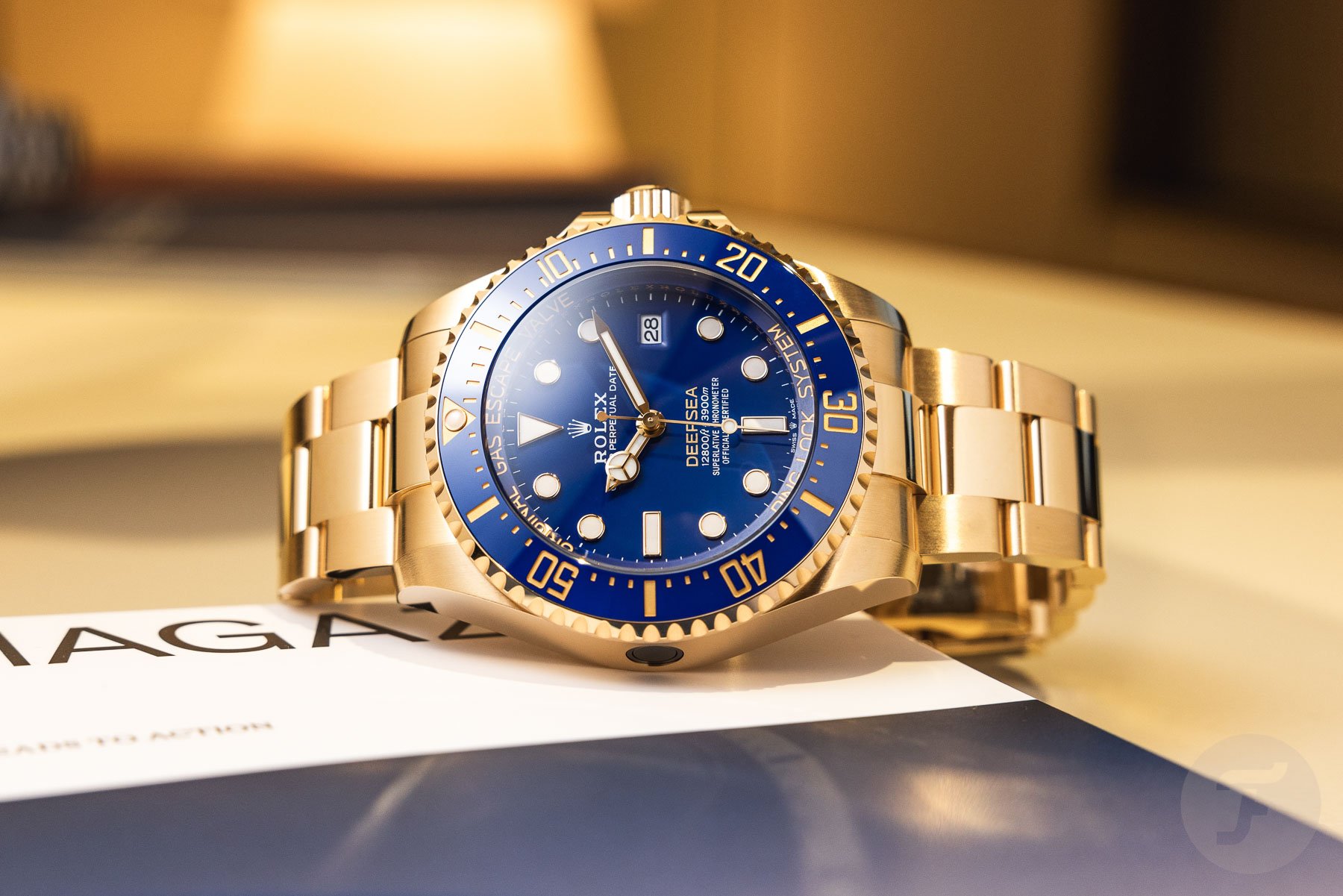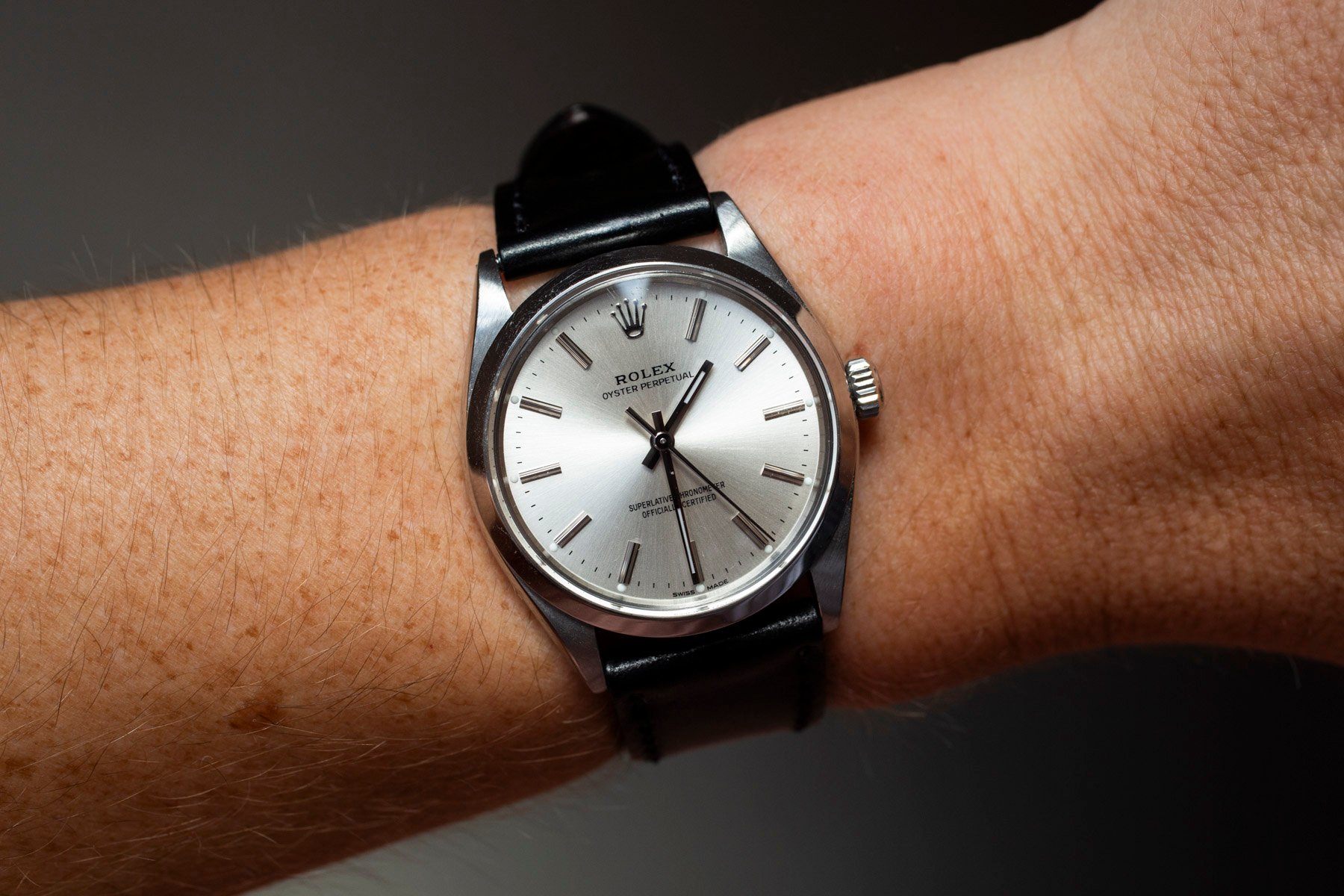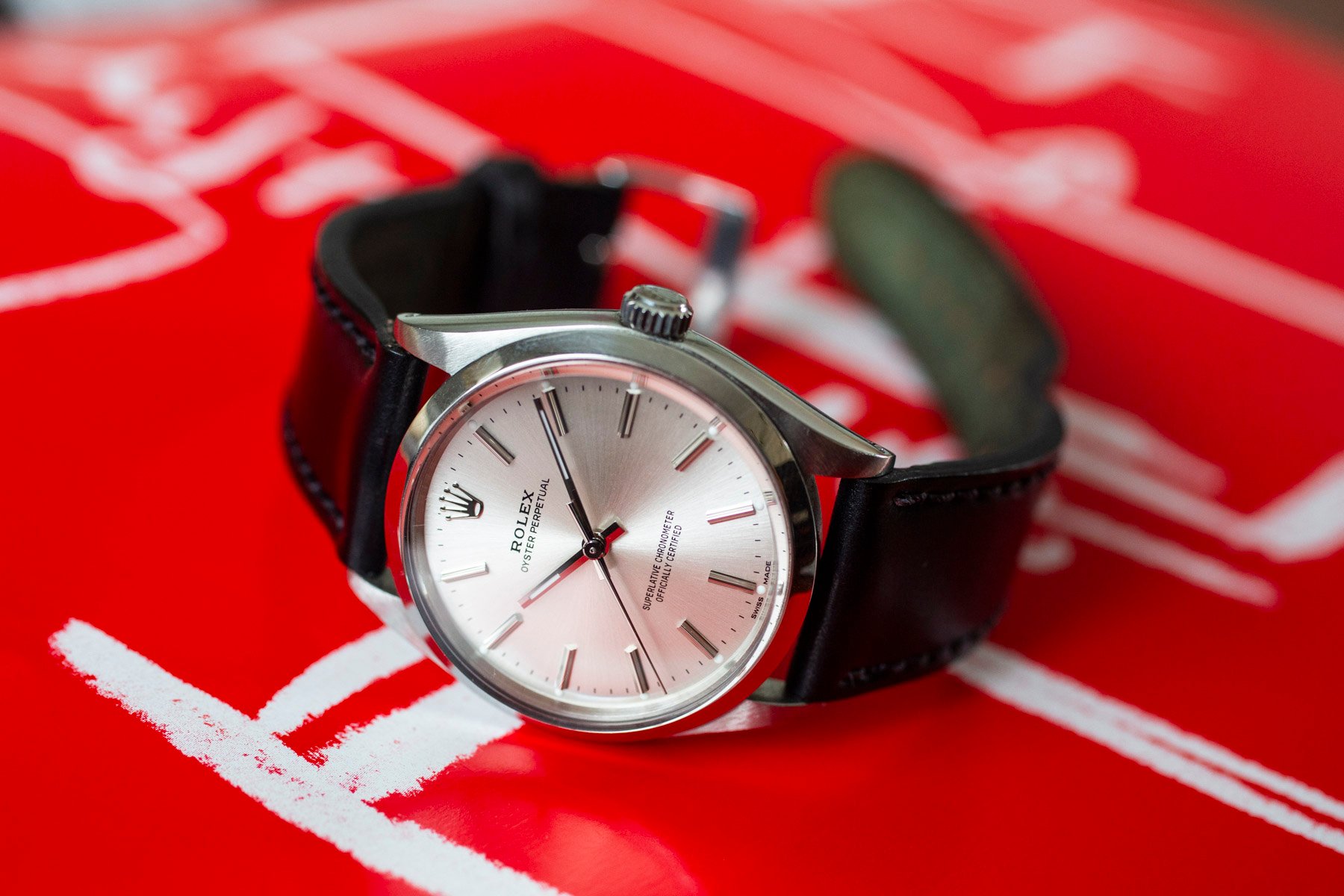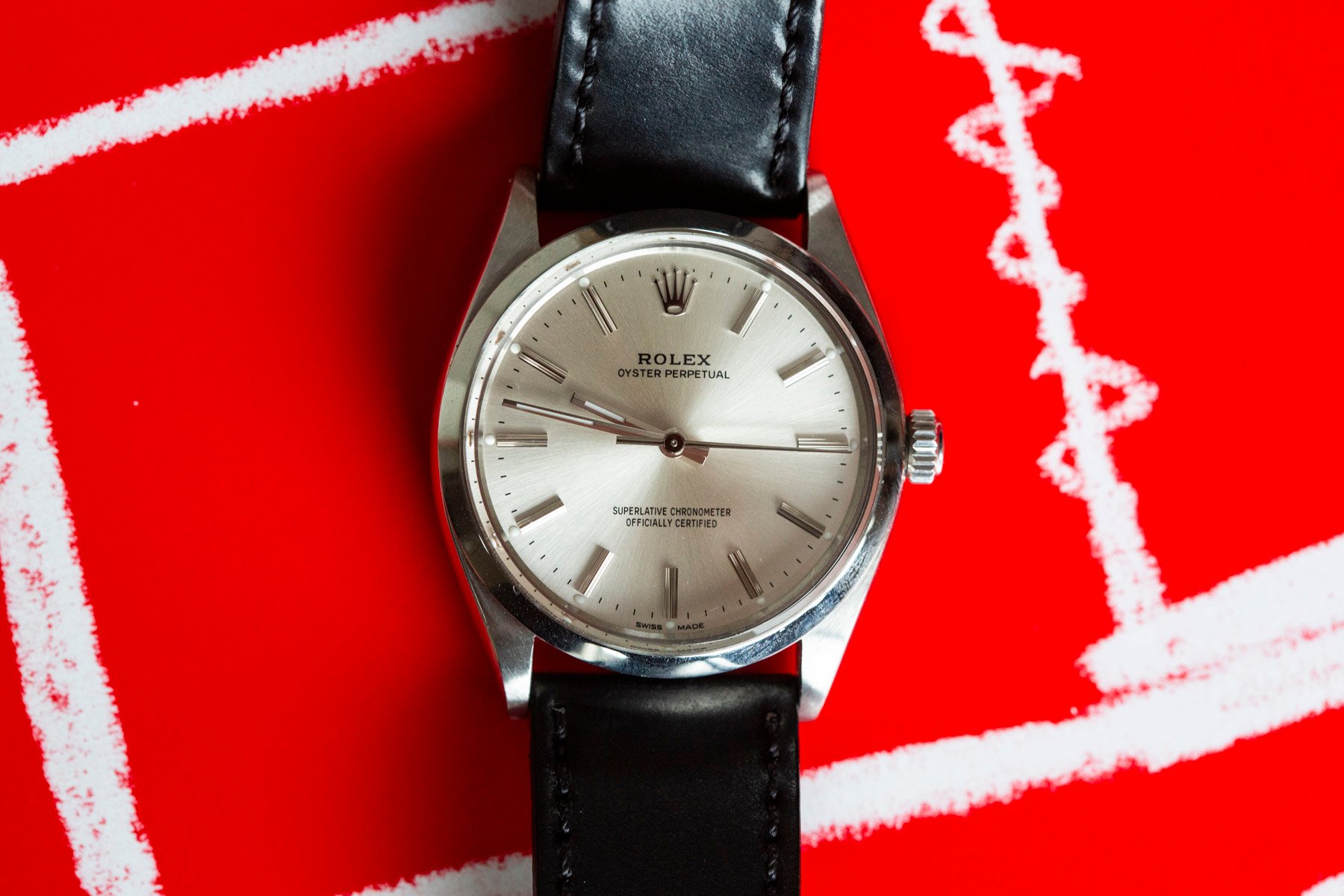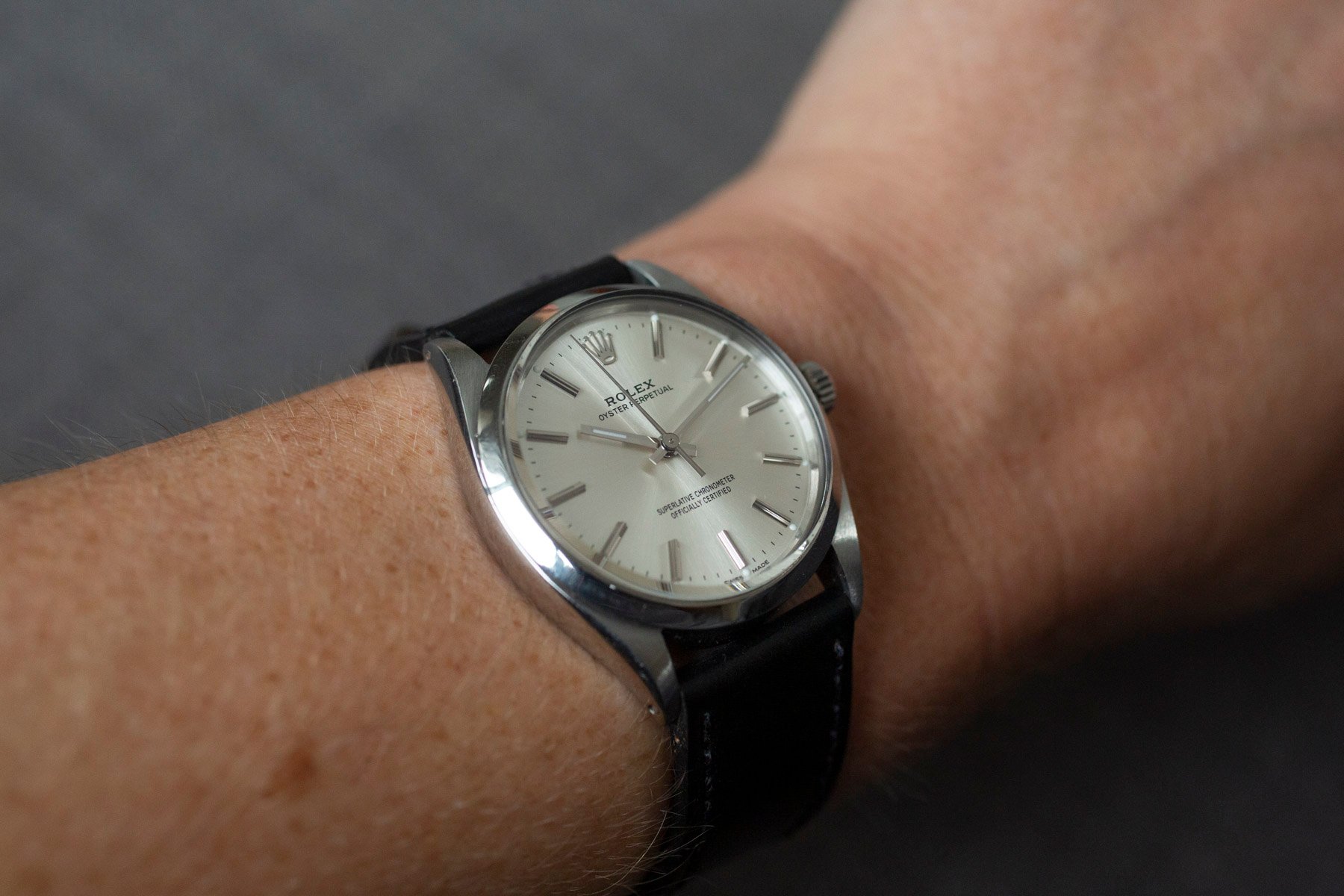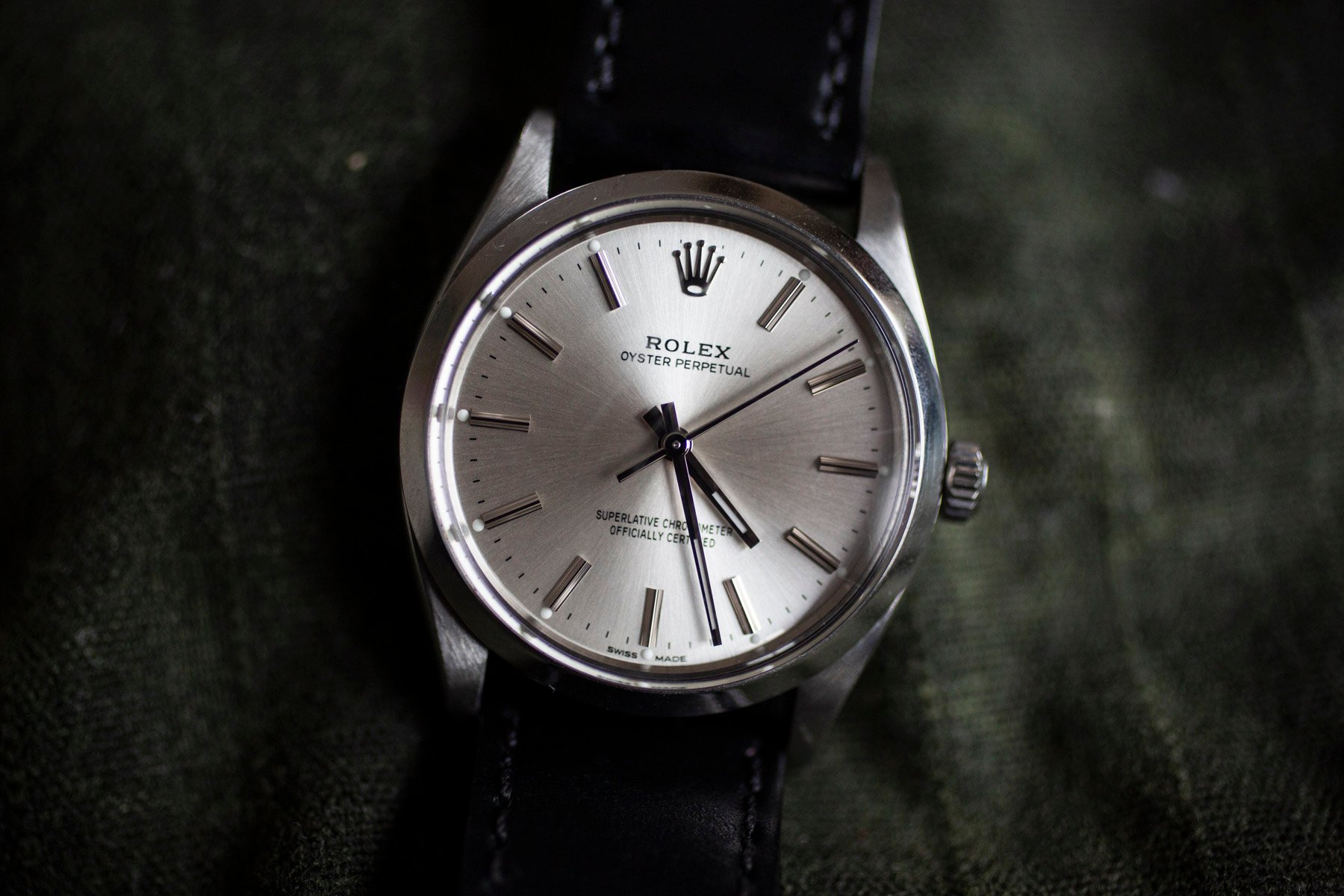My First Rolex: The Oyster Perpetual 1002
For me, Rolex had a golden era. It was from the middle of the last century right up until the mid-2000s. Many of our fellow enthusiasts and collectors seem to share this impression and veer towards this long period of Rolex design in their horological journeys. Why is this the case? I think it’s probably for a few reasons. One of the major ones, though, is that, over time, Rolex has become more and more focused on luxury. Or, you could say, the nature of luxury has changed. You see, even back in the 1960s and 1970s, Rolex was already targeting consumers with notions of aspirational wealth, status, and success. However, with the introduction of the six-digit models in the mid-to-late 2000s, this became even more intense.
In the end, I followed my advice from this feature and purchased a 1960s Rolex Oyster. But I ended up going for an Oyster Perpetual ref. 1002 complete with a fresh service dial. To me, it signifies all that is great about Rolex without the problematic baggage of the modern-day brand. Read on.
The Rolex Oyster Perpetual
Older Rolex advertising campaigns featured an angle that, while still present in the brand’s modern ads, has been eclipsed by a focus on celebrities and luxury. That angle was Rolex watches as hardy tools that wearers could rely on. It was this spirit, partly inspired by Rolex marketing and partly by the brand’s dedication to ruggedness, that made this era of Rolex watches gel with me so much. My colleague Mike Stockton was inspired by this sentiment to write a guide on some five-digit Rolex sports watches. You can find it here.
The DNA of modern Rolex can be traced back to the introduction of two elements into its products. The first was the “waterproof” case, known as the Oyster case, and the second was automatic movements, which led to the “Perpetual” in “Oyster Perpetual.” Most of you probably already know this, so I don’t mean to go over such well-trodden ground too much. But it was this simple nod to the past that played a significant role in my decision-making process around buying my first Rolex.
Rolex for a new era
In the 1960s, Rolex decided to provide Explorer 1016 watches to university students on a caving trip. They were exploring and mapping cave networks in Northern Spain for scientific benefit. Those early advertising campaigns stand in pretty stark contrast to what Rolex has become. Part of this is Rolex’s marketing and pricing strategy, i.e., moving upmarket. The other major part is the changing way we as a society approach luxury. The rise of social media influencers, hype culture, and short attention spans has had a run-off effect on watches as well and, arguably, no more so than with Rolex.
My colleague Thomas honed in on some of these issues very astutely in his article “Is 2024 The Year I Lose Touch With Rolex?” Among other factors, that article focuses on how Rolex had decided to release a host of watches in precious metals. It seems to be chasing the coattails of the Haute Horlogerie brands. In its older marketing, Rolex wanted to engage with the “common” man (and/or woman) in an aspirational sense too, even with the role of Tudor in its product strategy in the middle of the last century. Rolex was long seen as an “expensive” brand, sure, but not an “exclusive” one. Now it’s both.
Rolex and luxury
There is no denying that modern Rolex makes great products. This article is not about picking on Rolex, and all watch brands have shifted somewhat with our times. Brands need to evolve to survive and stay relevant. But what Rolex represents isn’t just a benign shift in how we approach luxury. Unfortunately, Rolex now represents many of the things we don’t like about our hobby, such as wait lists, rude ADs, market unavailability, and a lack of transparency in the industry. This is not necessarily Rolex’s fault but due to a shift in luxury culture more generally. This can rub people the wrong way and sometimes might mean that Rolex comes across as haughty.
The list goes on. Rolex as a brand name is developing unfavorable baggage of its own. Yes, the brand remains a powerhouse. It has no issue selling watches, and as a business model, it’s nearly flawless. In a recent rare interview, Rolex’s CEO said the brand sold “dreams.” The problem is that, for a growing number of people, getting a Rolex watch is more akin to a nightmare. In the long run, could these factors do meaningful damage to the Rolex brand? Only time will tell.
My first Rolex
So, like many watch enthusiasts out there, I was left with a problem. I like Rolex watch designs. I like what Rolex used to stand for. Modern-day Tudor is a great boon for us consumers, but it does not fill the gap that Rolex has left behind. The number of incredible stories that have built the Rolex name into what it is today is huge.
Besides the well-known stories, look at the WWII Rolex that served with the “Rats of Tobruk” or the Rolex Submariner that lived under the ocean for years before being reunited with its owner. Luxury safe queens will not lead to these great stories in the decades to come. So I looked to the past for inspiration and settled on the core tenants of what Rolex meant to me. Those were the two things I mentioned earlier in the article — a straightforward Oyster case and a simple Perpetual movement.
The Rolex Oyster Perpetual 1002
The Oyster Perpetual that I settled on actually came to me. That might sound a little strange, but let me explain. This was, in fact, my mother’s watch. She knew how much I liked watches, so my parents offered to sell this one to me. I had been after a Rolex Oyster for some time, partly inspired by seeing this specific watch on her wrist. I was over the moon with the opportunity to get this, particularly given its family significance.
This watch is an Oyster Perpetual ref. 1002 with a serial number dating back to 1966. Inside it beats a Rolex 1560 caliber, an automatic movement with an 18,000vph frequency, more than 42 hours of power reserve, and a Breguet hairspring. The Rolex Oyster Perpetual 1002 came into production around 1959 and continued right up into the 1980s. The case measures 34mm in diameter but, like so many other Oyster cases, it looks larger, perhaps more like a 35mm or 36mm case. It feels great on my 15.25cm (6″) wrist.
Why do I love this watch so much?
If I were to boil down the essence of modern Rolex, I’d probably get to this exact timepiece. This, to me, is Rolex in its purest form, with a clean, simple dial and beautiful case design. By not having additional components, it puts a greater focus on the fundamental Rolex design principles. It reminds me of the earliest Rolex Explorer models, which looked like 36mm Oyster Perpetual timepieces. My particular example has a Rolex service dial, which I love. This was because Rolex serviced it when my mother owned it. I know this can be a no-no for serious collectors. To me, though, this watch has sentimental value and will always be in the family.
Early Oyster-cased watches in the 1950s went on all sorts of incredible adventures besides the Everest expedition. My mind goes to the Tudor Oyster Prince ref. 7808 watches that went on the North Greenland Expedition. The 1950s were an era when 34–36mm watches were tools that went on incredible adventures. In small Oyster Perpetual models like the 1002, we have some of the purest expressions of Rolex DNA.
Closing thoughts
With this, dare I say it, humble Oyster Perpetual 1002, I feel this is all the Rolex I shall ever need. If it was good enough for the pioneers in the 1950s and 1960s, it’s more than good enough for me. Hopefully, I’ll also get to wear it on some future adventures of my own. I am very lucky to have been able to acquire this through the family and will honor it for years to come.
What do you think, Fratelli? What vintage Rolex models speak to you and why? Do you share my concerns over modern Rolex, or do you feel that those sentiments are off the mark? Please let me know in the comments.

